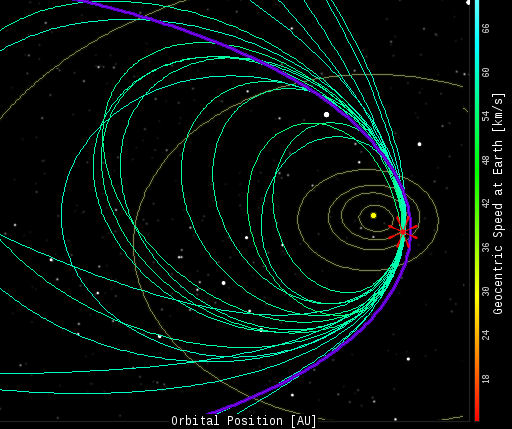EARLY PERSEID METEORS: Earth is entering a broad stream of debris from Comet Swift-Tuttle, source of the annual Perseid meteor shower. Meteoroids in the outskirts of the stream are now hitting Earth's atmosphere, producing as many as 10-15 meteors per hour according to worldwide counts from the International Meteor Organization. NASA's network of all-sky meteor cameras captured 17 Perseid fireballs on the nights of July 28th through 30th.
The position of Earth is denoted by the red starburst; all of the meteoroid orbits intersect at that point. The purple line traces the orbit of the parent Comet Swift-Tuttle. Fortunately, the comet itself does not intersect Earth.
In the days ahead, Earth will plunge deeper into the meteoroid stream, and meteor rates will increase accordingly. Forecasters expect the shower to peak on August 12-13 with as many as 100+ meteors per hour visible from dark-sky sites.
http://spaceweather.com/gallery/index.php?title=meteor
The position of Earth is denoted by the red starburst; all of the meteoroid orbits intersect at that point. The purple line traces the orbit of the parent Comet Swift-Tuttle. Fortunately, the comet itself does not intersect Earth.
In the days ahead, Earth will plunge deeper into the meteoroid stream, and meteor rates will increase accordingly. Forecasters expect the shower to peak on August 12-13 with as many as 100+ meteors per hour visible from dark-sky sites.
http://spaceweather.com/gallery/index.php?title=meteor












